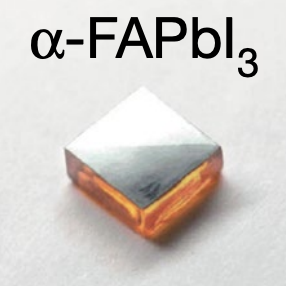Abstract
Strain engineering is a powerful tool with which to enhance semiconductor device performance. Halide perovskites have shown great promise in device applications owing to their remarkable electronic and optoelectronic properties. Although applying strain to halide perovskites has been frequently attempted, including using hydrostatic pressurization, electrostriction, annealing, van der Waals force, thermal expansion mismatch, and heat-induced substrate phase transition, the controllable and device-compatible strain engineering of halide perovskites by chemical epitaxy remains a challenge, owing to the absence of suitable lattice-mismatched epitaxial substrates. Here we report the strained epitaxial growth of halide perovskite single-crystal thin films on lattice-mismatched halide perovskite substrates. We investigated strain engineering of α-formamidinium lead iodide (α-FAPbI3) using both experimental techniques and theoretical calculations. By tailoring the substrate composition—and therefore its lattice parameter—a compressive strain as high as 2.4 per cent is applied to the epitaxial α-FAPbI3 thin film. We demonstrate that this strain effectively changes the crystal structure, reduces the bandgap and increases the hole mobility of α-FAPbI3. Strained epitaxy is also shown to have a substantial stabilization effect on the α-FAPbI3 phase owing to the synergistic effects of epitaxial stabilization and strain neutralization. As an example, strain engineering is applied to enhance the performance of an α-FAPbI3-based photodetector.
